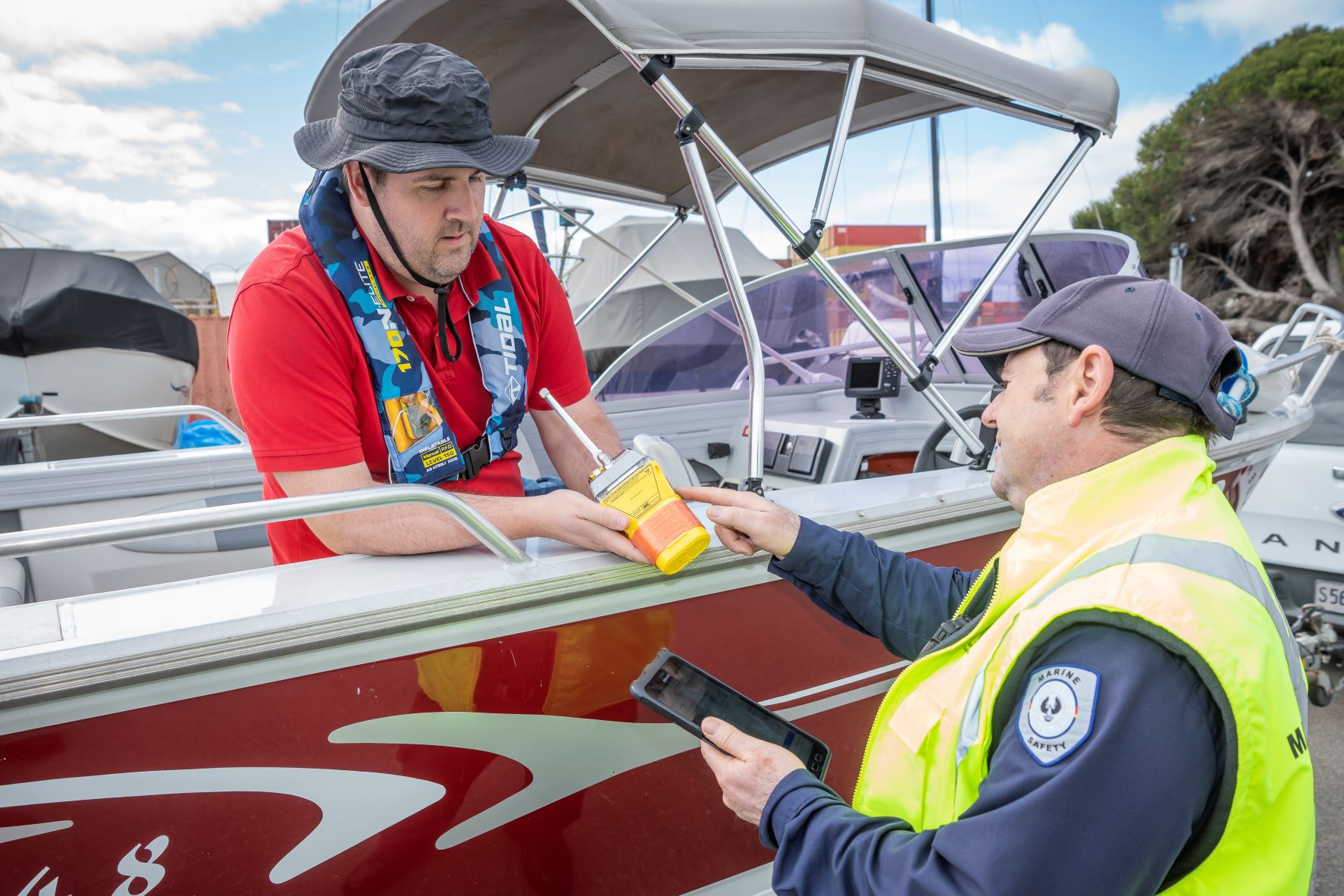Emergency position indicating radio beacons - EPIRB
An emergency position indicating radio beacon (EPIRB) is a small electronic device that can help search and rescue authorities find people in distress. An EPIRB must be registered with the Australian Maritime Safety Authority (AMSA) once purchased or transferred in ownership. When activated, it emits a continuous distinctive radio distress signal for at least 48 hours. It is mandatory to carry an EPIRB when operating in South Australian waters more than 3 nautical miles (approximately 5.5 km) from shore. It is a great idea to always carry an EPIRB even if you are operating in waters closer to shore.
A Personal Locater Beacon (PLB) is also handy to have at hand. They are designed to be worn attached to your lifejacket or clothing and are especially useful if you fall overboard and you can’t get to your EPIRB. PLBs tend to be smaller and more lightweight. Many paddlers or people that boat alone use a PLB. If you are operating in un-protected waters more than 3 nautical miles from shore then carrying a PLB does not meet the requirement to carry an EPIRB, but they are a great addition to your safety kit.

When to use an EPIRB
You should only use an EPIRB when there is grave and imminent danger.
During an emergency, you should first try to communicate with others by using radios, phones and other signaling devices such as flares. Mobile phones can be used but should not be relied on as they can be out of range, have low batteries or become water-damaged.
If you accidentally activate your EPIRB, switch it off immediately and notify the Australian Rescue Coordination Centre as soon as possible on 1800 641 792.
How to activate an EPIRB
The EPIRB will carry printed instructions on it on how to activate it. You should be familiar with these instructions.
Watch this short video with instructions on how to activate an EPIRB.
To activate the EPIRB:
- Take the device from its cradle.
- Raise the antenna.
- Activate the switch.
- Unravel the lanyard (cord) from the device and attach to the vessel, life-raft, or your lifejacket.
- When you are sure it is attached, throw the device into the water.
Don't hold on to the EPIRB because is designed to work best when floating in the water.
When must you carry an EPIRB?
Vessels are required to carry an emergency beacon if they are:
- Recreational vessels:
- More than five nautical miles from shore in Gulf of St Vincent or Spencer Gulf.
- Three nautical miles from shore in other state waters, except Lakes Alexandrina or Albert.
Approved distress beacons
For an EPIRB to be an approved distress beacon for use in South Australian waters, it must:
- Be capable of transmitting on a frequency of 406 megahertz.
- Comply with AS/NZS 4280.1:2022 MHz satellite distress beacons - marine emergency position-indicating radio beacons (EPIRBs)
- Be currently registered with the Australian Maritime Safety Authority (AMSA).
- Be located so that it is accessible if required but protected from accidental damage or loss.
- Be maintained in good working order (including having a battery that is not past its expiry date).
Personal locator beacons (PLBs) which meet AS/NZS 4280.2 do not meet the legal requirements for distress beacons on vessels, so they are not approved EPIRBs.
Personal locator beacons can be used as an additional safety measure and 406 MHz PLBs may also be registered with AMSA.
Registering a 406 MHz EPIRB
Registration is free and you can register your beacon online.
You can also get forms to post, fax or email your registration to Australian Maritime Safety Authority. For more information, call 1800 406 406 during office hours.
A registered 406 MHz beacon will allow the Australian Maritime Safety Authority's rescue coordination centre to retrieve valuable information that will assist with your rescue from the registration database.
You can also register your trip itineraries, so when a beacon is activated the rescue coordination centre will know your current movements and be better placed to organise a rescue.
Personal location beacon (PLB)
406MHz personal locator beacons (PLBs) are available in smaller lightweight sizes than an EPIRB to enable them to be carried with you. They can generally be attached to your lifejacket or clothing so they are easily activated if you fall overboard and cannot access your EPIRB. They are most commonly used by solo boaters and paddlers.
If you are operating in un-protected waters more than 3 nautical miles from shore then carrying a PLB does not meet the requirement to carry an EPIRB, but they are a great addition to your safety kit.
Disposal of unwanted distress beacons
Unwanted beacons should be disposed of safely. Information on how unwanted distress beaconds should eb disposed of is provided on the Australian Maritime Safety Authority (AMSA) website.


